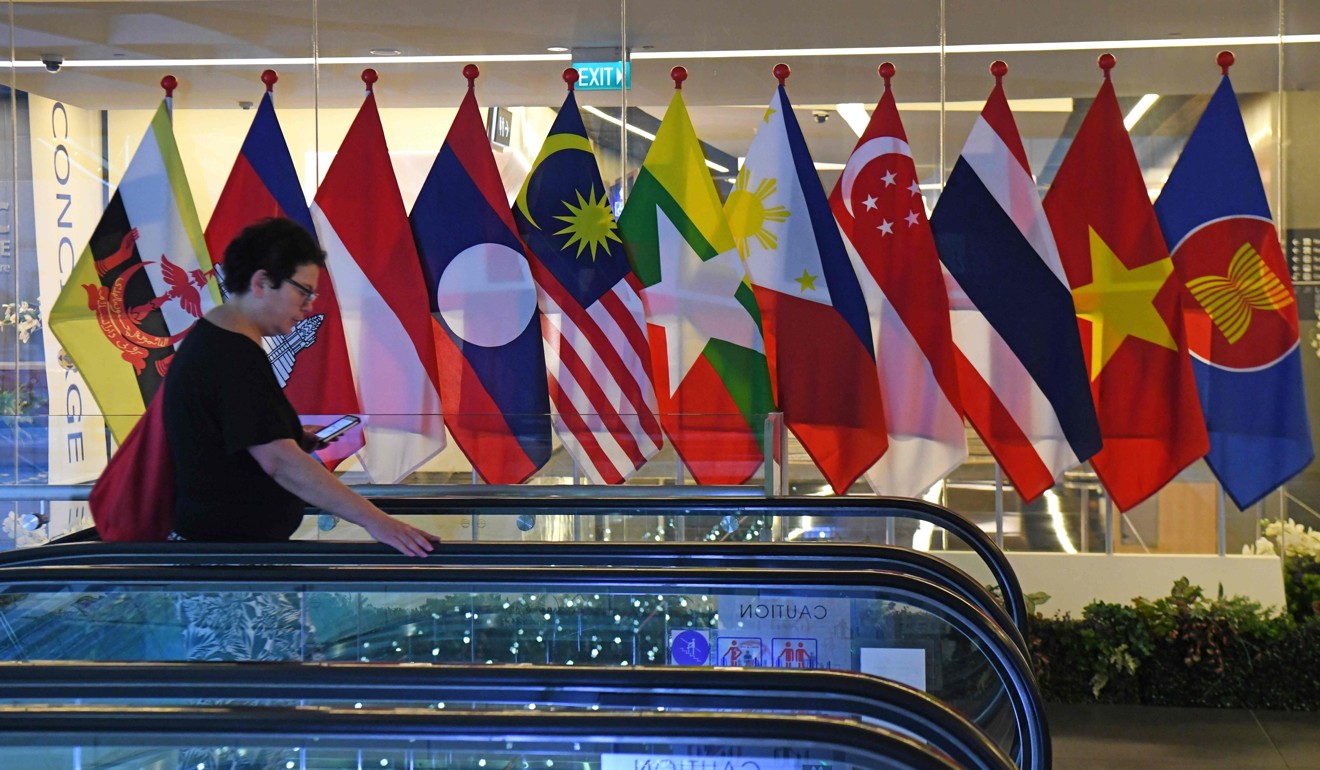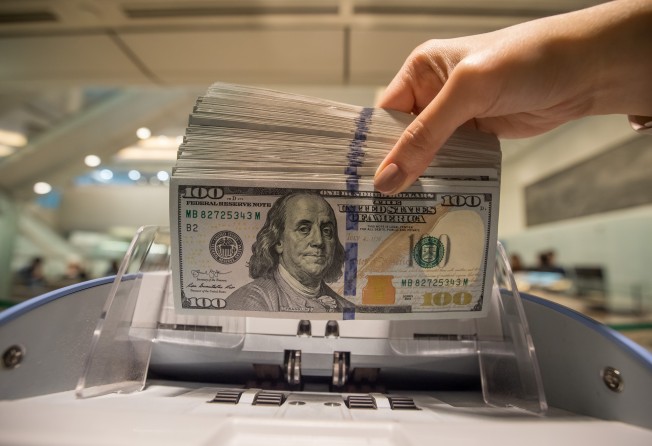
Is US-China trade war starting to erode US dollar dominance?
- Asean+3 is considering adding yuan and yen to their regional forex reserves pool safety net
- Analysts say shift to reduce US dollar dominance is underpinned by expectations that trade war will cause shift in consumption and investment patterns away from globalisation

The contemplation by Asian finance leaders to add the Chinese and Japanese currencies to a regional foreign reserves buffer fund is the latest sign that the trade war is causing countries to slowly move away from dependence on the US dollar.
Their consideration, analysts said, could be underpinned by expectations of the shift in world consumption patterns and corporate investments away from a globalised trading system and towards a system centred on the three large regions – the US, the European Union and China – that operate differently.
The 10 members of the Association of Southeast Asian Nations plus China, Japan, and South Korea, together known as “Asean+3”, were reported earlier this month to be considering including the yuan and the yen to their Chiang Mai Initiative Multilateralisation (CMIM) scheme, a framework for multicurrency swap arrangements.
The US$240 billion CMIM scheme was established in response to the 1997 Asian financial crisis to serve as a safety net that provides US dollar support to any one of the countries in the event of a liquidity crisis.

The leaders of Asean+3 said with the region facing threats from trade protectionism and reduced external demand, concrete measures needed to be taken to improve procedures and institutional arrangements of the finance process to foster regional integration and sustainable development.
“Increased mutual agreements on initiatives relating to the promotion of local currency usage and a greater role for local currencies as reserve currency, local currency contributions to the CMIM may be one enhancement option,” they said in a joint statement released earlier this month.
The Asean members are Brunei, Cambodia, Indonesia, Laos, Malaysia, Myanmar, the Philippines, Singapore, Thailand and Vietnam.
The review of the CMIM scheme to add additional regional currencies into the fund, amid the escalating US-China trade war, underscores not only growing efforts in Asia to bolster intraregional financial linkages, but also the regional countries’ intent to reduce reliance on the US dollar-based financial system.
Increased mutual agreements on initiatives relating to the promotion of local currency usage and a greater role for local currencies as reserve currency, local currency contributions to the CMIM may be one enhancement option
Until now, America’s global influence had come more from the strength of its financial sector than its military might, said Mike O’Sullivan, former chief investment officer in the international wealth management division of Credit Suisse, thanks to the ubiquitous use of the dollar, the depth of its capital markets and the power of its banks.
“[But ] the trade dispute was a marker of China’s rise and the belated realisation of America’s elite as to how it should curb this,” O’Sullivan said.
China’s rise in recent years and its ambition to lead a new economic world order have irked the US, which has dictated global trends for decades. Trade tensions between the world’s two biggest economies escalated last July when US President Donald Trump slapped the first round of tariffs – 25 per cent on US$34 billion worth of Chinese imports, followed by 25 per cent tariffs on an additional US$16 billion in August.
A further escalation occurred Friday, when the US raised levies for another US$200 billion of Chinese goods from 10 to 25 per cent, and started making preparations to impose 25 per cent tariffs on all remaining imports from China, worth about US$300 billion, as trade talks between the two countries hit an impasse last week.
The US dollar remains the global reserve currency, accounting for 63 per cent of global reserves. The euro is in second place at 20 per cent, but it has suffered the largest proportional decline over the past 10 years. The Japanese yen ranks third at 4.9 per cent.
By comparison, the yuan accounts for about 1.9 per cent of global reserves, and a 1.2 per cent share for international payments.
The potential addition of the yuan into the CMIM scheme would be another boost to China’s relentless push to promote wider use of its currency alongside its global economic rise.
Concerns about the country’s financial stability and its relatively closed capital account had limited the usage of the yuan and prevented it from becoming a dominant reserve currency, said Colin Ellis, credit strategist at Moody’s Investors Service.
“International trade and financial links with China were unlikely to prompt major changes in foreign reserve composition in the near term,” Ellis said.
But Standard Chartered’s Greater China senior economist, Kelvin Lau ,said the internationalisation of the yuan had continued to gather pace this year despite the trade war. Foreign investors had raised their holdings of onshore yuan-denominated assets, with equity investments in particular jumping 46 per cent in the first quarter, Lau said.
“Recent official comments, including [Chinese President] Xi Jinping’s keynote speech at the Belt and Road Forum [in April], show continued commitment to further opening up China’s markets, encourage fair competition and protect foreign interests,” he said.
The “Belt and Road Initiative” is China’s global trade strategy to spur economic activities along the ancient Silk Road land and sea routes linking Asia, Africa and Europe.
The initiative, together with the increase in the opening up of the Chinese domestic financial markets had made the internationalisation path of the yuan clearer, said Betty Rui Wang, ANZ Bank’s senior China economist.
“When the global financial system is dictated by US dollars, you need other currencies for diversification. China aims to open up its capital account and the increased international use of the yuan will help Chinese exporters to manage their currency risks,” Wang said.